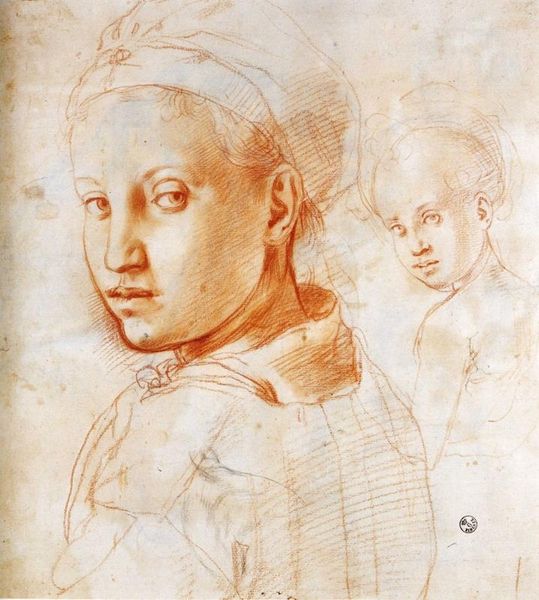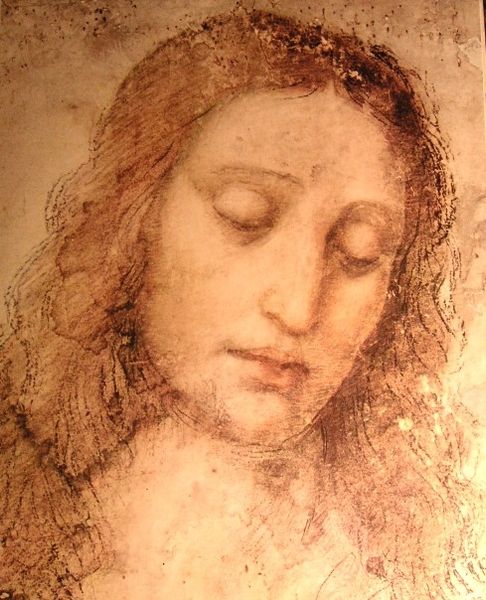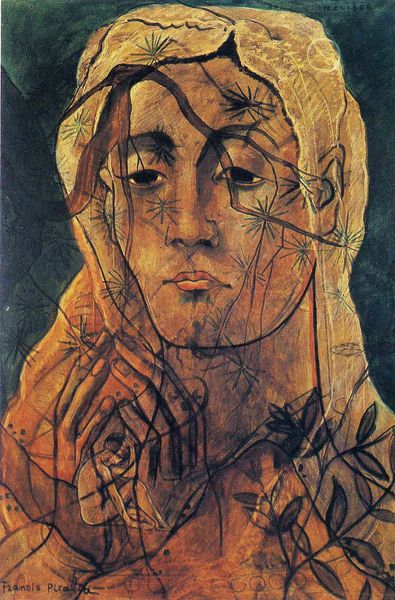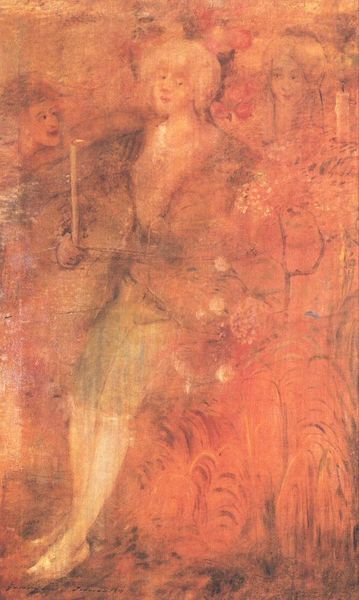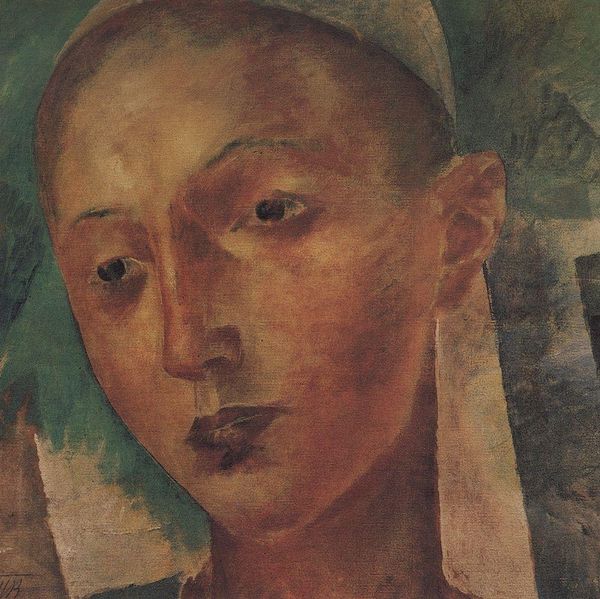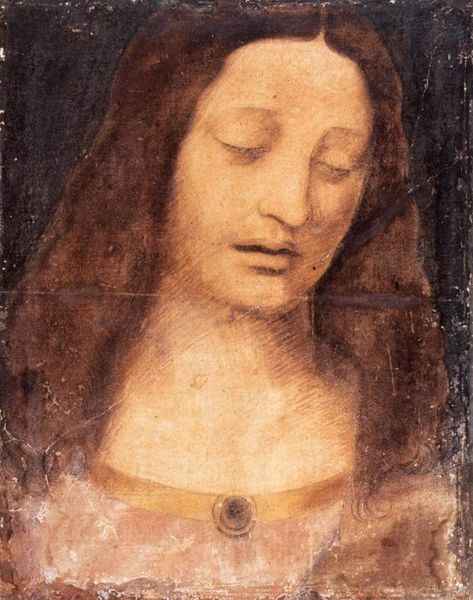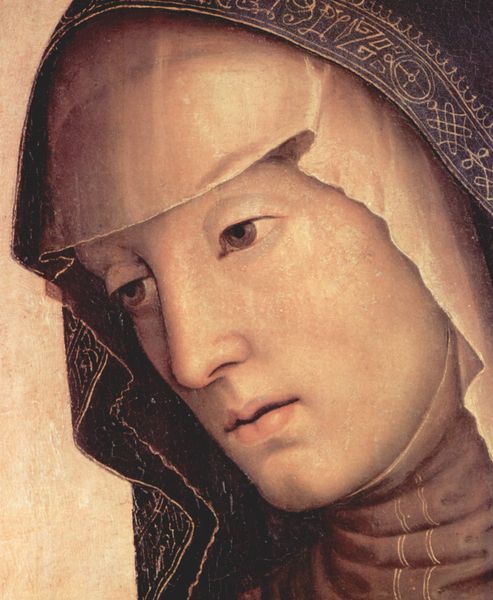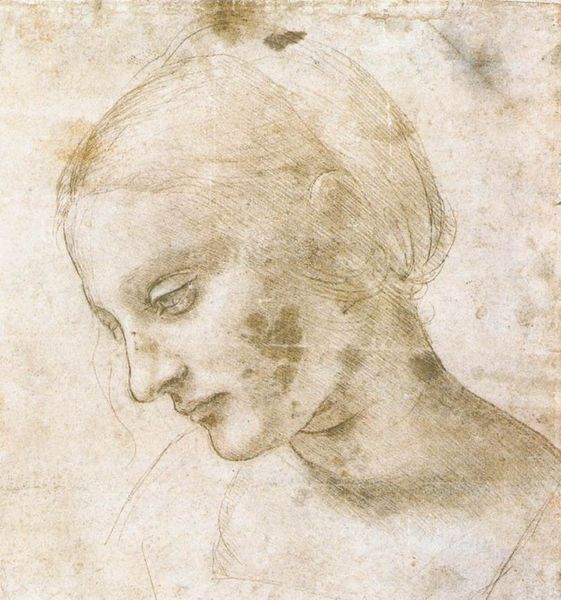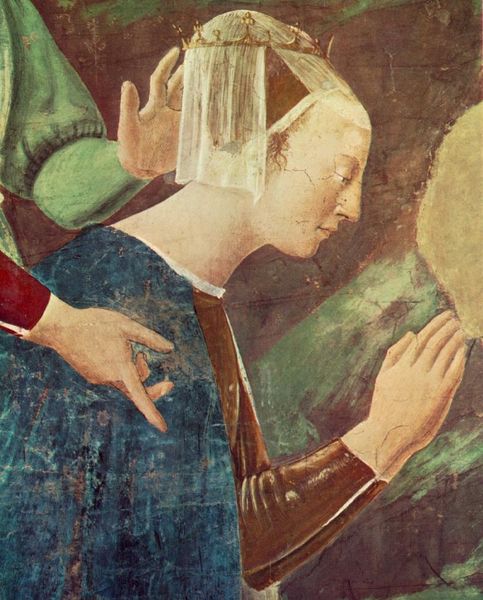
fresco
#
portrait
#
figuration
#
fresco
#
oil painting
#
famous-people
#
christianity
#
human
#
painting painterly
#
history-painting
#
italian-renaissance
#
early-renaissance
#
christ
Copyright: Public domain
Editor: So this is "Queen of Sheba" a fresco painted in 1466 by Piero della Francesca. It’s quite striking. What catches my eye is how grounded it seems, almost earthy. How do you read this piece? Curator: Let’s consider the fresco technique itself. Applying pigment to wet plaster demands a specific kind of labor and speed. It is quite demanding to produce, don’t you think? How does the visible hand of the artist, the actual making, inform our understanding of this queen’s story? Editor: That’s interesting…so it’s not just about *who* she is but also *how* the image of her was made, and what materials. It looks like a very rough texture! What does that imply? Curator: Precisely. Early Renaissance frescoes often had very little luxury associated with the materials themselves. But their cultural significance in the Basilica elevates this "craft" into the realm of fine art. Notice how the use of fresco, a public art form, serves to broadcast wealth and power. Does it seem that it democratizes art? Or it appropriates a "humble" medium? Editor: I see. So it is almost like the Renaissance patrons and artists are “investing” this fresco, this queen, this Basilica…it speaks a lot about wealth management too. Curator: Exactly. Now consider what other interpretations might also fit! Remember, this artwork tells us less about some queen in some old biblical land and more about the relationship between the artist and its social, political context, as much as it’s related to biblical interpretations. Editor: So, really, thinking about how this work was created helps us understand the society that valued it. The art becomes like a piece of social record. Curator: Right. By focusing on the materials and means of production we unveil social meaning and that shapes how we appreciate art history. Editor: Wow, I've learned a great deal! Thank you. Curator: My pleasure!
Comments
No comments
Be the first to comment and join the conversation on the ultimate creative platform.
